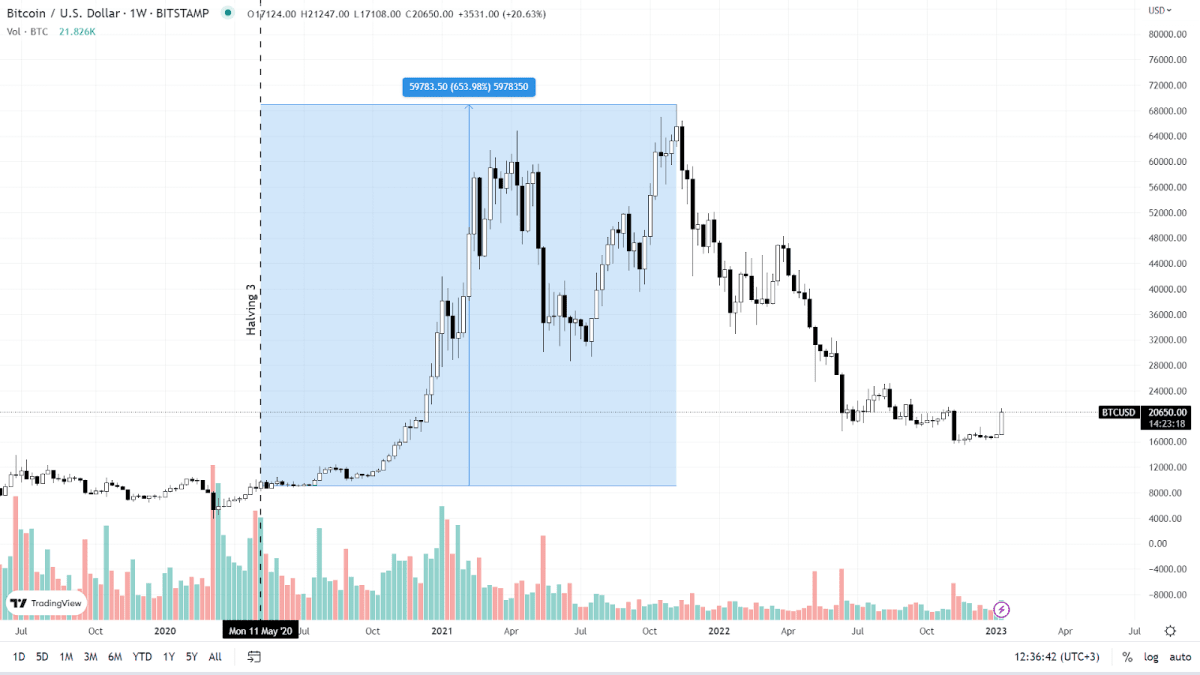Halving: what is it, and how does it affect Bitcoin?

Halving refers to reducing the block reward that is distributed to miners.
Halving in the Bitcoin network occurs every 4 years. Bitcoin last halved on May 11, 2020. Now, 1 mined block brings 6.25 BTC.
The next halving will tentatively take place on April 14, 2024, reducing mining income to 3.125 BTC per block.
History of halving
Satoshi Nakamoto (the creator of Bitcoin, whose real identity is unknown) introduced the halving procedure to increase BTC's value and reduce inflation. At the beginning of the blockchain, in 2009, miners received 50 BTC for one mined block.
The first halving took place on November 28, 2012. The block reward has been reduced to 25 BTC. The date of the second halving was July 9, 2016, and the third one was May 11, 2020. Each event occurs approximately every 4 years.
The halving occurs after every 210,000 blocks mined, with a mining rate of each block approximately once every 10 minutes. But, sometimes, blocks enter the network slower than usual, sometimes faster, which causes the halving date to shift. With the current mining speed and difficulty, the next reward reduction will occur on April 19, 2024.
Impact on BTC price
After each halving, within a year or two, there was an explosive increase in the Bitcoin value. The same applies to volatility and trading volumes.
The first halving provoked a BTC price increase from $11 to $1100 (it took 4 years to reach the price maximum after the halving). It was during 2012-2016 that Bitcoin became the most popular and hit the global economic headlines.
The second halving caused the same "bull run" of 2017 when the cost of the leading cryptocurrency approached $20,000 for the first time. After the third halving, BTC hit an all-time high of $69,000.

The impact of the first halving on the BTC price

The impact of the second halving on the BTC price

The impact of the third halving on the BTC price
It wasn't just the halving that caused Bitcoin to renew its highs. There were many reasons, including increased media attention to cryptocurrencies, new investment infusions, and an ICO boom, among other factors.
Advantages and disadvantages of halving
Reducing the reward to miners by 2 provides:
- Decreased inflation rate of Bitcoin;
- Increasing the difficulty of mining BTC;
- Reduced supply, causing demand to outstrip supply, making Bitcoin deflationary.
The main disadvantage of halving is still hypothetical. If it becomes unprofitable to mine BTC, after the next halving, the miners can abandon the process. It will cause a slowdown in transactions and a "freeze" of the BTC blockchain. Fortunately, the hash rate (mining difficulty) is recalculated every 2 weeks, and if a lot of people leave the bitcoin mining industry, those who remain will earn more.
This mechanism is the reason why Bitcoin issuance is strictly programmed. Difficulty recalculation ensures emission stabilization while halving sets its speed. Based on this formula, the last Bitcoin will be mined only in 2140.
Recommended

